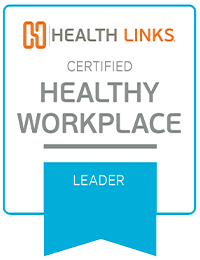
Health Links [HL]: What does being a Healthy Workplace mean to your organization?
City and County of Denver [CCD]: Being a healthy organization means helping our employees invest in their own well-being. We want our employees to have access to the resources they need to be financially, emotionally, professionally, and physically healthy. We know that healthier employees are more engaged in their work and more resilient to the challenges of building a city. Our organization includes thousands of jobs — from police officers to lawyers and nurses to mechanics. Our employees face angry clients at the DMV and people in difficult situations at the department of human services. They pick up trash and prune trees. Without an investment in our employees’ health and safety, we wouldn’t be able to create a world class city.
HL: How does your organization create a culture of health, safety, and well-being for employees?
CCD: The City and County of Denver works with its internal and external partners to create a culture of health, safety, and wellbeing. The city has two, full-time wellness coordinators who work with internal agency partners and external medical benefits providers to make sure we maximize the health and well-being resources available to our employees. We also promote prevention through an incentive program.
By working collaboratively with our insurance partners and our broker, we can look at medical claims by agency to understand what the most pressing needs of each are. Once we understand their needs, we choose interventions that best address those needs. We have compiled a list of interventions, separating them into categories based on the claims and health concerns they address as a sort of tool box. When we have conversations with leaders in different agencies about their employees most pressing health concerns, we provide several examples from the interventions list of ways to best address the specific needs of their staff.
Some of the resources we connect our employees with include weight loss programs, healthy meeting policies, educational programs on wellness topics such as nutrition and stress management, benefits plan education, on-site fresh produce stands, on-site fitness classes, and an online wellness portal.
The foundation of our program is a monetary incentive to encourage employees to create a relationship with their primary care doctors. For the last five years, we have had about 33% of our employees participate in the program, awarding participants with either HSA dollars or a discount on their premiums for taking a health assessment, completing their biometric screenings and tending to their preventive care.
These investments in our employees’ well-being are the building blocks of our culture of health, safety, and well-being.
HL: What changes have you seen among your employees, their families, or the surrounding community as a result of your program(s)?
CCD: Participation in our programs continues to grow. We had 600 more employees take advantage of our incentive program in 2018 than we did the previous year. Participation in our on-site wellness classes have doubled this year. Since we started promoting our weight loss programs in 2016, 1184 employees have lost total of 4540 pounds.
Four employees have shared with us that as a result of their participation in the wellness program, they learned they had cancer and were able to get treatment to stop its progression. On a weekly basis, I run into employees in the elevator or in the hall who stop to tell me about how many pounds they’ve lost, how much better they are sleeping since they attended our meditation classes, or how they can’t wait for the farm stand season to start. I’ve received numerous emails from mothers returning to work who are grateful for the work we’ve done to make sure the lactation rooms in our building are easy to access and pleasant to use.
HL: How has Health Links helped your organization?
CCD: We consider Health Links to be one of the most comprehensive intervention tools we can offer our agencies. Several of our individual agencies have taken advantage of the certification and advising sessions to create their own specific wellness programs using tools like surveys and the leadership training. Using the assessments and tools from Health Links helps create legitimacy for our well-being programs and builds support from the grassroots level. I know when I recommend the certification process or the SSWell Study to an agency, I’m promoting a holistic tool that will help them build a solid foundation for their program.
HL: What tips or pieces of advice would you give to an organization looking to create a healthier, safer, and happier environment?
CCD: Use your data. Linking our participation data with all the Office of Human Resource data was eye opening to understand our population and create a more targeted program. Also, keep in mind that things move slow. If something doesn’t work at first, it might still be worth trying again in the future.


